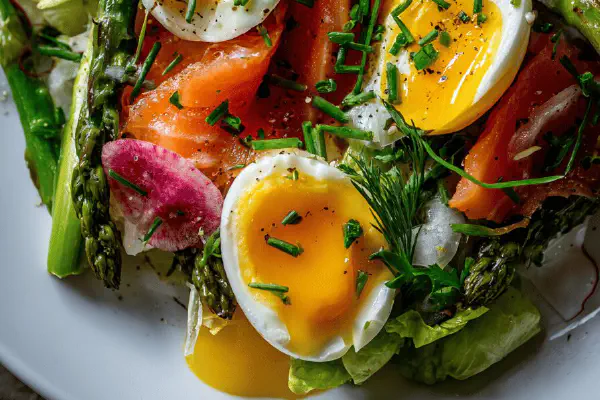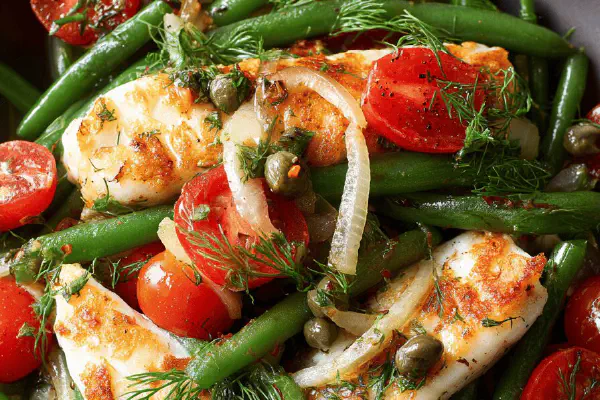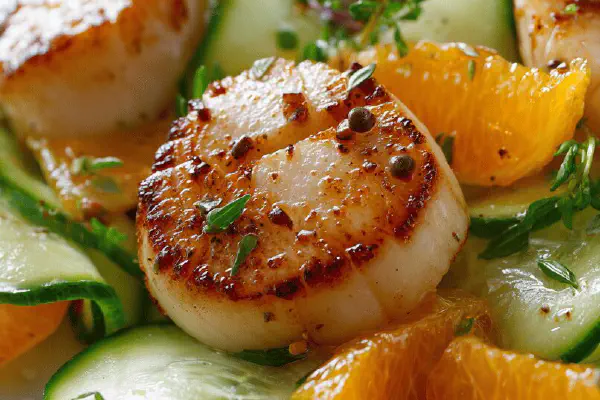Crunchy Asparagus Tuna Salad

By Emma
Certified Culinary Professional
Ingredients
- 5 eggs
- 620 g asparagus, trimmed and cut into 3 pieces
- 1 can 400 g chickpeas, rinsed and drained
- 300 g cherry tomatoes, halved
- 50 ml olive oil
- 50 ml toasted walnut oil
- 40 ml apple cider vinegar
- 20 g finely grated Grana Padano cheese
- 45 g panko breadcrumbs
- 1 clove garlic, minced
- 2 cans 198 g each tuna in oil, drained and coarsely flaked
- Fresh basil leaves for serving, optional
About the ingredients
Method
- Start with eggs in simmering water; gently lower with slotted spoon. Watch time closely around 6 mins for slightly firmer yolks but still creamy centers. Meanwhile prep asparagus by snapping off tough ends then cutting into thirds; asparagus should still have a vibrant snap when bitten.
- Add asparagus to eggs after 4 minutes; cook together for another 3-4 minutes until asparagus bright green and tender-crisp. Drain both into colander; refresh under cold water until cool to touch. This shocks cooking, preserves texture and color. Peel eggs under running water for easier shell removal without ragged white.
- Halve eggs lengthwise on cutting board, keep ready. Place asparagus in big bowl. Add chickpeas, tomatoes, 1/4 cup olive oil, vinegar, and grated Grana Padano. Season with salt and freshly ground black pepper. Toss gently but fully combine dressing, bright acidity cuts through richness.
- Heat a small pan on medium. Toast panko with garlic in leftover olive oil until golden; smell fragrant nutty garlic. Keep stirring to avoid dark spots. Salt and pepper after. Don’t overcrowd pan, small batches may be better to get even color without burning.
- Drain tuna thoroughly—important to keep salad from oily puddles. Reserve a tablespoon of oil, whisk into salad mixture for added unctuousness and flavor layer.
- Serve salad on plates, mound tuna atop mixture, arrange two egg halves per serving cautiously so yolks don’t crumble. Sprinkle toasted garlic panko over everything generously for crunch and toasted aroma. Finish with basil leaves for fresh herbal perfume and color contrast.
- Keep an eye on timing and watch for bubbling or crackling to gauge when asparagus is done; overcooked turns mushy instantly. If you don’t have walnut oil, substitute with light toasted sesame or avocado oil. Chickpeas bring creaminess and earthiness; if unavailable stick with rinsed white beans but reduce quantity slightly to balance texture.
Cooking tips
Chef's notes
- 💡 Eggs in near-simmer, not rolling boil, avoid cracking shells. Peel under running water for clean whites, easier slicing. Timing is key, 6 minutes gets creamy but firm yolks; less and yolks break, more and chalky. Snap asparagus by hand to test freshness. Cutting in thirds keeps bite consistent. All about feel not just time.
- 💡 Reserve tuna oil to add back into dressing. Adds umami depth without grease puddles. Drain well or salad gets soggy fast. Leftover olive oil good for toasting panko with garlic. Medium heat only, watch closely or breadcrumbs burn bitter. Stir constantly small batches better. Don’t crowd pan, toasted bits must stay golden, not dark spots.
- 💡 Apple cider vinegar sharper than white balsamic, cuts through richness without overpowering. Adjust amount by taste or vinegar brand strength. Walnut oil brings gentle toast flavor, swap sesame or avocado if missing. Partial olive oil lets dressing stay fresh but with warmth from walnut. Dressing texture not slick, more layered mouthfeel.
- 💡 Chickpeas swapped here for white beans bring earthier creaminess but keep bulk. If absent, white beans work but reduce quantity slightly to avoid mush. Basil optional, fresh leaves add floral lift, but oregano or parsley ok alternatives. Scatter on at end to avoid wilting and keep color punch intact.
- 💡 Cold water bath after boiling shocks asparagus and eggs, stops carryover cooking. Retains bright green color and asparagus snap. Timing staggered – asparagus added after eggs start cooking, layered texture, avoids mush. Watch asparagus closely, bubbles and crackle sound fade mean done. Overcook instantly mushy, no bounce left.
Common questions
Can I use canned white beans instead of chickpeas?
Yes, but reduce amount. Chickpeas add nuttiness and creaminess. White beans softer, risk mushier texture if quantity not adjusted. So smaller portion helps keep structure, balance the salad mouthfeel.
How to prevent burnt panko when toasting?
Medium heat only, constant stirring essential. Toast in small batches, overcrowding means uneven color, some bits burn fast. If it smells bitter, scrap batch. Garlic aroma must be fragrant, not charred. Keep pan moving to avoid hotspots.
What if no walnut oil for dressing?
Substitute with light toasted sesame or avocado oil. Avoid strong flavors that overpower asparagus or tuna. Olive oil by itself ok but milder. Walnut oil adds warmth, but alternatives retain some toastiness without losing crunch signals.
How to store leftover salad?
Keep dressing separate if possible, refrigerate up to two days. Eggs soften, panko lose crunch fast. Tuna oil in dressing can coat and preserve flavor but makes salad oily over time. Basil best fresh, add on plating not in advance to stay bright.



